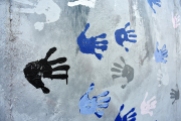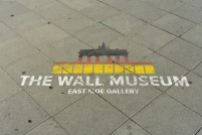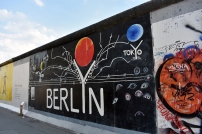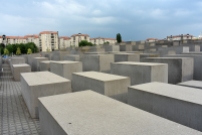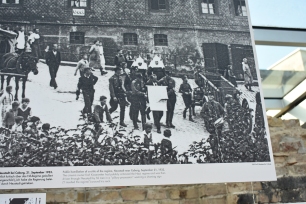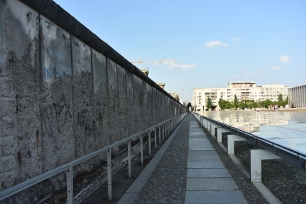“Berlin is the testicle of the West. When I want the West to scream, I squeeze on Berlin.”
– Nikita Khrushchev
I had been in Germany a couple of times, but always smaller places like Mannheim, Heidelberg and others I can’t even remember… I had never been to Berlin so I decided now was the time… And the Berlin Wall was on my Bucket List.
It didn’t disappoint. Berlin is a huge city, but it has a lot of old history and enough historical monuments to keep a person like me occupied for quite some time. Also, two of my friends from South Africa, Tania & Natacha are living there now so we got to meet up again too. (They’re working as tour guides, which meant free Berlin tour for me because they’re so awesome!) ❤ ❤
I stayed in three different places while in Berlin, the first was chosen for its proximity to Ostbahnhof (Select Hotel Berlin Ostbahnhof), because the train from the airport stops there. Location was great with regards to the train and the East Side Gallery (parts of the wall which is now covered with street art, definitely worth a visit).
Second place was closer to the center of the city with a metro right outside to take me wherever I wanted to go (the metro system is very easy and organized) – this is where I stayed the longest. Nice, clean, new hotel (Novum Style Hotel Aldea) – close to everything important. I was very happy here.
Third place was a hostel close to the main train station because my train left super early in morning. It was ok, good for the price – but very Christian (I didn’t know that before I booked… The WiFi was called GodFi or something *lol*)
While in Berlin I had three things on my bucket list: The Berlin Wall, Checkpoint Charlie and Brandenburger Tor. I also wanted to see the memorial for the murdered Jews – Luckily, Tania had this on her list of things to show me 😀
THE BERLIN WALL (EAST SIDE GALLERY)
BRANDENBURGER TOR
CHECKPOINT CHARLIE
MEMORIAL FOR THE MURDERED JEWS/HOLOCAUST MEMORIAL
“The Memorial to the Murdered Jews of Europe in Berlin dedicated to the Jewish victims of the Holocaust, designed by architect Peter Eisenman and engineer Buro Happold. It consists of a 19,000 m2 site covered with 2,711 concrete slabs or “stelae”, arranged in a grid pattern on a sloping field. The stelae are 2.38 m long, 0.95 m wide and vary in height from 0.2 to 4.7 m. They are organized in rows, 54 of them going north–south, and 87 heading east–west at right angles but set slightly askew. An attached underground “Place of Information” holds the names of approximately 3 million Jewish Holocaust victims, obtained from the Israeli museum Yad Vashem.
Building began on April 1, 2003, and was finished on December 15, 2004. It was inaugurated on May 10, 2005, sixty years after the end of World War II, and opened to the public two days later. It is located one block south of the Brandenburg Gate, in the Mitte neighborhood. The cost of construction was approximately €25 million.”
TOPOGRAPHY OF TERROR
The Topography of Terror is an outdoor and indoor history museum in Berlin. It’s on Niederkirchnerstrasse on the site of buildings which was the SS Reich Main Security Office, the headquarters of the Sicherheitspolizei, SD, Einsatzgruppen and Gestapo during the Nazi regime (1933-1945).
The buildings that housed the Gestapo and SS headquarters were largely destroyed by Allied bombing during early 1945 and the ruins demolished after the war. The boundary between the American and Soviet zones of occupation in Berlin ran along the Prinz-Albrecht-Strasse, so the street soon became a fortified boundary, and the Berlin Wall ran along the south side of the street, renamed Niederkirchnerstrasse, (1961-1989). The wall here was never demolished.
The first exhibitions of the site took place in 1987, as part of Berlin’s 750th anniversary. The cellar of the Gestapo headquarters, where many political prisoners were tortured and executed, was found and excavated. The site was then turned into a memorial and museum. The excavation took place in cooperation with East German researchers, and a joint exhibition was shown both at the site and in East Germany in 1989.


































